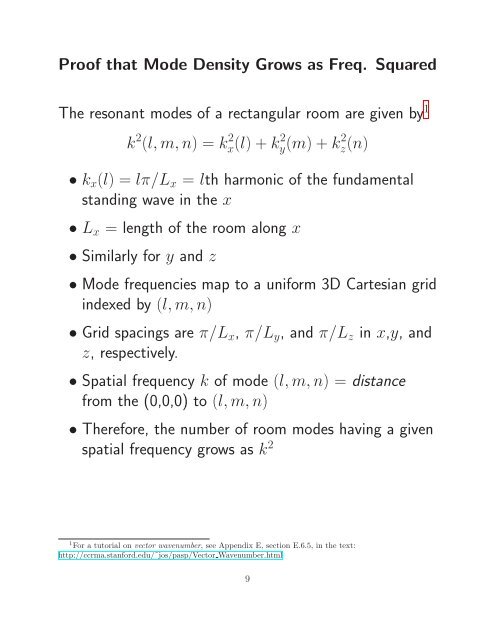Articles - CCRMA - Stanford University
Articles - CCRMA - Stanford University
Articles - CCRMA - Stanford University
Create successful ePaper yourself
Turn your PDF publications into a flip-book with our unique Google optimized e-Paper software.
Proof that Mode Density Grows as Freq. Squared<br />
The resonant modes of a rectangular room are given by 1<br />
k 2 (l,m,n) = k 2 x(l)+k 2 y(m)+k 2 z(n)<br />
• kx(l) = lπ/Lx = lth harmonic of the fundamental<br />
standing wave in the x<br />
• Lx = length of the room along x<br />
• Similarly for y and z<br />
• Mode frequencies map to a uniform 3D Cartesian grid<br />
indexed by (l,m,n)<br />
• Grid spacings are π/Lx, π/Ly, and π/Lz in x,y, and<br />
z, respectively.<br />
• Spatial frequency k of mode (l,m,n) = distance<br />
from the (0,0,0) to (l,m,n)<br />
• Therefore, the number of room modes having a given<br />
spatial frequency grows as k 2<br />
1 For a tutorial on vector wavenumber, see Appendix E, section E.6.5, in the text:<br />
http://ccrma.stanford.edu/˜jos/pasp/Vector Wavenumber.html<br />
9
















